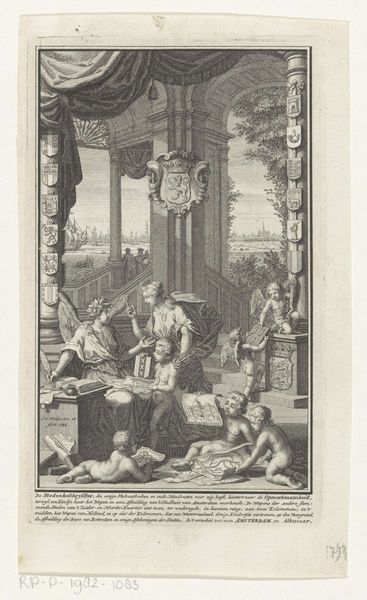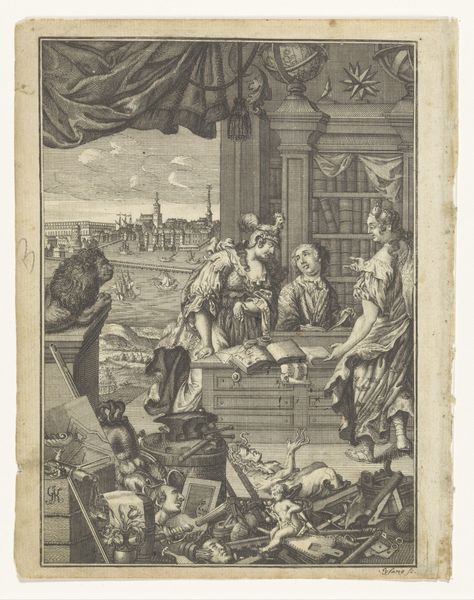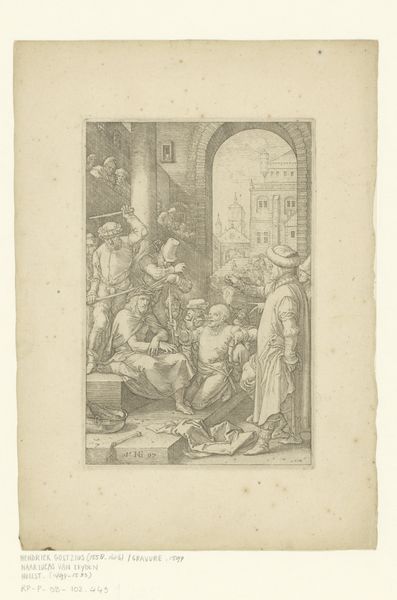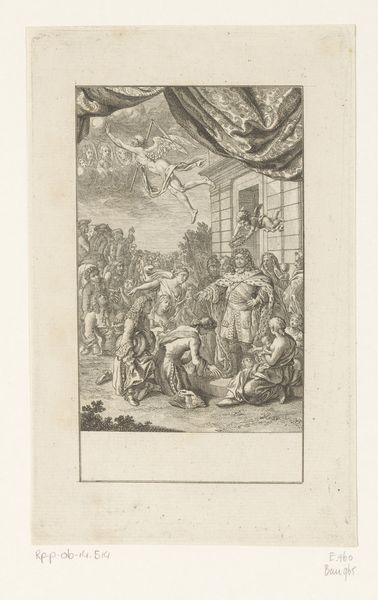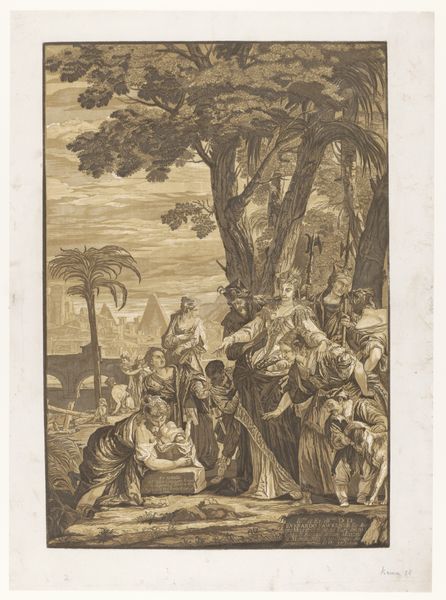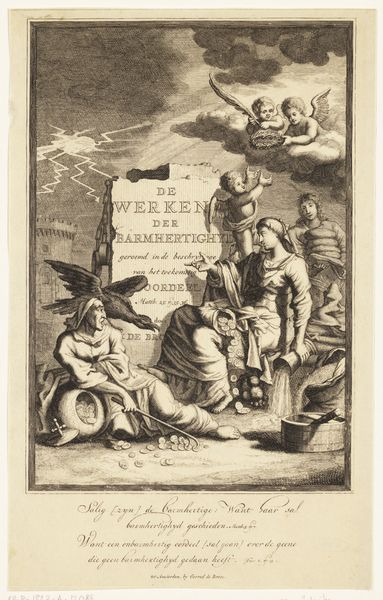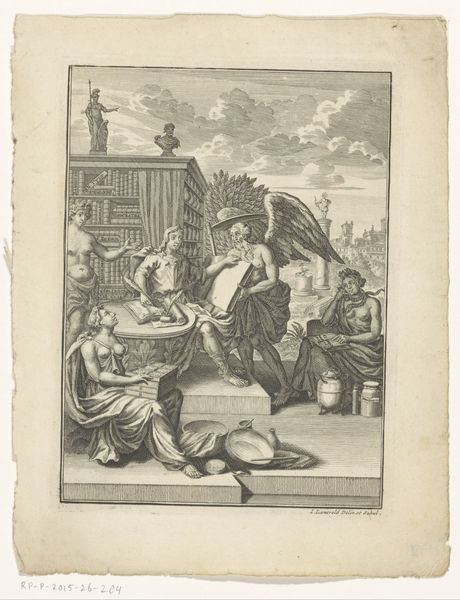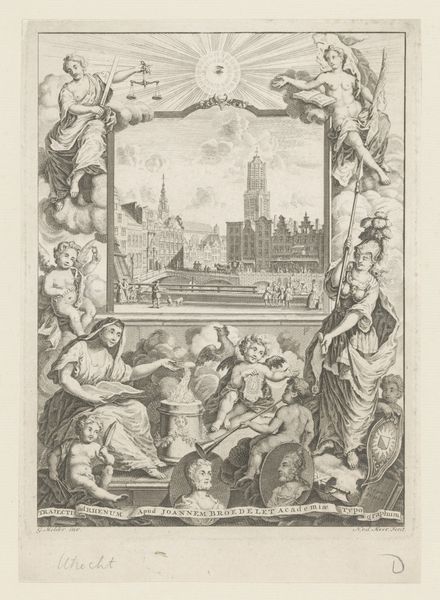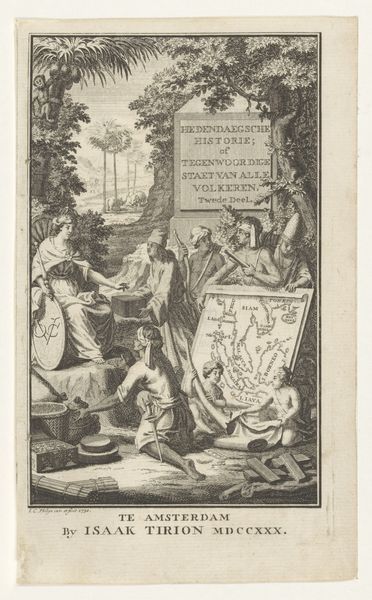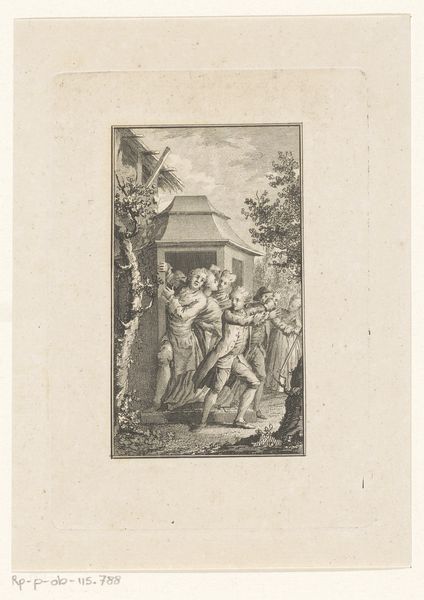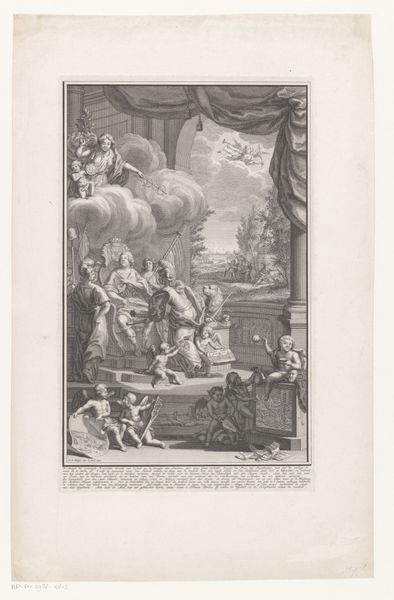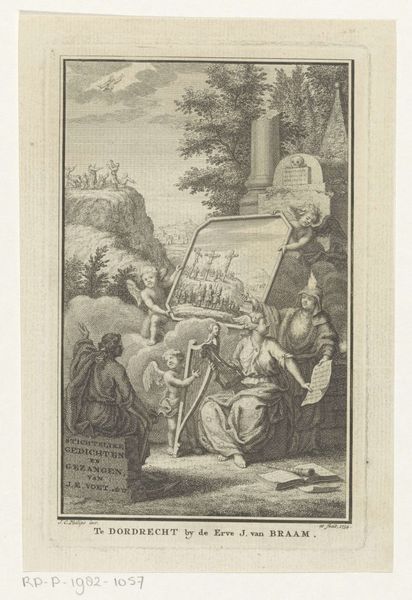
print, engraving
#
allegory
#
baroque
# print
#
old engraving style
#
traditional media
#
figuration
#
line
#
history-painting
#
engraving
Dimensions: height 177 mm, width 106 mm
Copyright: Rijks Museum: Open Domain
Curator: This intricate engraving is titled *Allegorie op de provincie Gelderland*, created by Jan Caspar Philips in 1741. It now resides in the Rijksmuseum collection. It strikes me immediately as being quite self-important. Editor: Yes, and stiff, in that 18th-century way. The composition is so formal, isn't it? Look at the sheer number of symbols packed in. What’s going on here materially? All of the various shields hanging on the facade behind the figures suggests this must have required great craftsmanship. Curator: Right, it’s dripping with allegory. Gelderland, personified as a seated woman, holds court. She is presented alongside an allegorical representation of the river Rhine on the right and Mars, God of War, on the left; at her feet is what looks like the god Cupid, examining a map. Editor: You have the artist, Philips, working here with the means to memorialize regional power by associating Gelderland’s history with classicizing representations; what gets depicted, who it is depicted by and for is very telling of the consumption and circulation of media culture at the time. How would that reflect Gelderland's aspirations back then, do you think? Curator: I believe it represents Gelderland striving for recognition, portraying itself as a realm of art, learning, military prowess, and fertile lands. It’s propaganda of sorts. Note how the style evokes a glorious past while reaffirming its presence in the present. The landscape viewed in the distance feels less important, almost as though they feel history is the core element to what made this place. What does that make you think? Editor: I'm intrigued by how printmaking made such imagery accessible. An engraving, allowing this political message to reach beyond painted portraits for wealthy landowners—even if its black and white nature restricts its grandeur, what impact did Philips have with his final products. Curator: Considering the context, Philips’ intention of appealing to a broader audience must have significantly promoted regionalism; that makes this all the more captivating. Editor: Absolutely. It offers us a revealing peek into how identities were constructed and consumed back then. Curator: Agreed; Jan Caspar Philips provides not just an artistic example but offers tangible political ambitions as well.
Comments
No comments
Be the first to comment and join the conversation on the ultimate creative platform.
